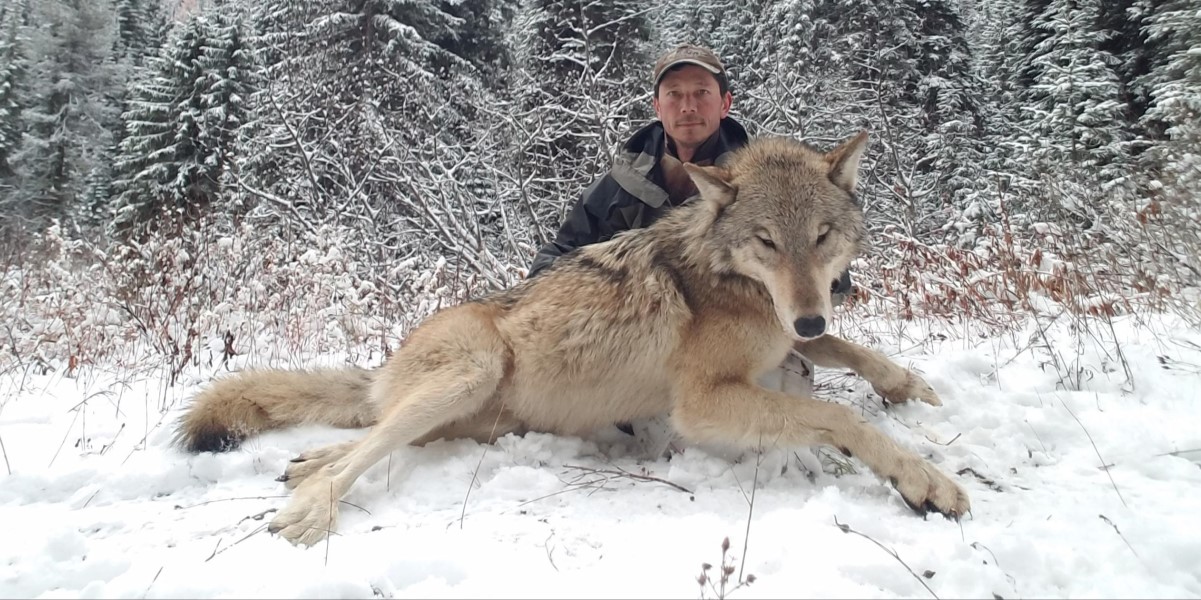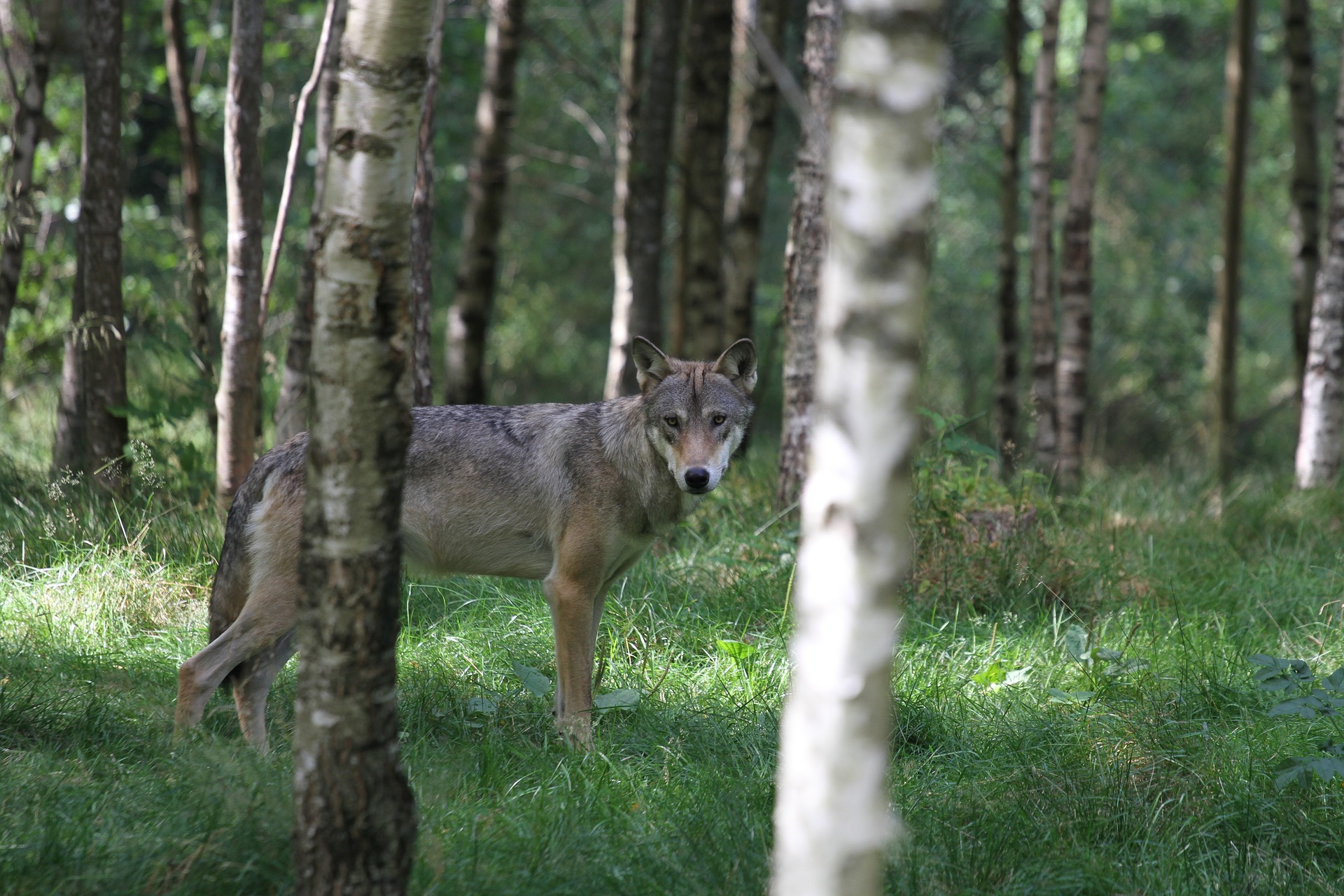
Wolf hunting is not only difficult, but it is also extremely rewarding. In case you want to give it a shot and are prepared to pack your best Scabbard backpack and head out into the wilderness this hunting season, here is everything you need to know about the subject.

Table of Contents
The history of wolf hunting
Wolves are one of the wildlife species that have long been feared by human beings. Consequently, these animals began to defend their territory with ferocity and aggression against ranchers who were occupying more and more space for their livestock as the herds grew in number.
This has resulted in the legend of wolves being bloodthirsty animals who attack livestock and humans alike becoming ingrained in our collective memory of these animals. For a long time, the authorities encouraged the hunting and killing of wolves, and as a result, wolves were designated as threatened or endangered.
In an effort to combat this situation, officials from the Fish and Wildlife Service (FWS) took steps in 1995 to reintroduce this animal into national parks such as Yellowstone National Park. However, within a short period of time, the wolf population in states such as Montana, Idaho, and Wyoming increased at an alarmingly rapid rate. Despite the fact that wolves are still protected by law in more than 48 states, hunters argue that wolf hunting should be legalized in order to maintain the population’s health and population stability.
In 2019, wolf hunting was only permitted in a small number of states, including Alaska, Idaho, Montana, and Wyoming, among others. Although some people believe that hunting should be permitted in other states as well, given the fact that the wolf population in other parts of the country is not in danger of extinction, others disagree.
The role of wolves in wildlife management
Wolves play an important role in the prevention and control of the spread of diseases in the wildlife population. The fact that wolves frequently prey on the weaker members of a herd means that they can contribute to the sanitization of the landscape by removing sick animals who, if left to live with the herd, can spread disease.
Perks of wolf hunting
While some people believe that hunting wolves is counterproductive after the state spent a significant amount of money to reintroduce this species, there are some advantages to wolf hunting that many people recognize and support.
For starters, responsible wolf hunting can help to keep the number of wolves under control and manageable. People, wildlife, and livestock will be safer as a result, and this is an argument that should be taken into consideration.
Furthermore, it should be noted that wolf hunting is a difficult and time-consuming endeavor. Weaving their way through the forest as prey animals, wolves are among the most difficult animals to hunt. A thorough understanding of the behavior of these animals is required in order to perform this task effectively. One year in Idaho, for example, saw the sale of more than 30,000 licenses for wolf hunting, a record for the state. Yet, by the end of the season, only 1000 wolves had been successfully hunted down and killed.
Another factor that should not be overlooked is the fact that an increasing wolf population has a negative impact on other wildlife species that are preyed upon by these animals. Observations have shown that elk and deer have retreated to areas that are difficult to access when wolf populations are increasing in a given area. Hunting for these species has become extremely difficult as a result of this situation.
How to hunt wolves
Wolf hunting requires a great deal of stamina and patience, and it is not an activity that novice hunters are likely to be successful at. One of the most significant drawbacks of this endeavor is that, despite the fact that wolves hunt at night, wolf hunting is currently prohibited under current regulations.
When it comes to hunting techniques, there are two major options that a hunter can choose between. For starters, you can purchase a wolf tag and keep it with you while you are out elk or deer hunting, as there is a chance that you will come across a pack of wolves while you are out in the wilderness.
The second option is to go out and hunt specifically for wolves. This is made even more difficult by the fact that baiting is not permitted in the United States. Making a noise with your mouth is something you can experiment with. To be sure, excessive howling by inexperienced hunters can teach these animals to avoid howling in the first place.
Tips and tricks
The reason for this is that wolves are more reckless during the colder season, which increases your chances of successfully hunting these animals when the weather is poor.
As soon as you have shot and killed one of the wolves, it is recommended that you remain in that location because the pack is very likely to return to that particular area. As a result, by remaining in the designated area, you have a better chance of getting a second shot. It is necessary, however, that you check your local regulations to ensure that second kills are permitted, as this may not always be the case in your area.
The presence of birds such as ravens or magpies can provide information about the location of a fresh kill, which can be useful when attempting to locate wolves.
Camouflage and gear
Wolves have excellent vision, and as a result, hunters who do not dress in camouflage are more likely to be detected. Seasoned hunters recommend that when going wolf hunting, one should dress in camouflage clothing, as well as masks and gloves to avoid being detected. In order to successfully blend in with your surroundings, the camo that you wear must be a match for the environment.
In an effort to meet the demands of hunters, an increasing number of manufacturers have begun to produce high-quality camouflage clothing. The purchase of a high-quality bipod is also recommended because it will provide you with a stable platform from which to take a clear shot. Be sure to do your research before purchasing this type of equipment to ensure that the unit you choose will work well on uneven terrain.
Furthermore, a high-quality pair of binoculars that you can wear around your neck can be extremely useful because they will allow you to get a clear view of the prey from a safe distance.

Prep work
Given that wolves have established travel patterns, it is recommended that you scout the area in search of wolf crossings and other possible travel routes. If you want to do it efficiently, use binoculars or a spotting scope that allows you to quickly scan the hunting grounds.
Furthermore, keep in mind that wolves prefer to travel on well-traveled paths. As a result, it is a good idea to keep an eye out for animals on roads and trails, as these may be the places where they congregate. In the event that you have a wolf in your line of sight, you should only fire when you are absolutely certain that the bullet will hit the intended victim. Any harm done to the animal by a miscalculated shot will be completely unnecessary.
You should be aware, if you are a novice hunter, that standard vermin calibers are ineffective when it comes to fatally injuring these animals. Consequently, ensure that you bring along the appropriate equipment to assist you in completing the task at hand.
When hunting wolves, it’s important to remember that killing a female wolf is a better strategy than hunting large male wolves, as doing so will help to keep the wolf population under control.
Strategy
As previously stated, wolves are most active at night, according to our research. Because it is illegal to hunt for wolves at night, your best bet is to go out early in the morning or just before dusk and do your best to avoid being caught. You should incorporate howling into your strategy if you want to attract the animals. However, you should avoid using howling excessively, as this may work against you in the long run.
You can also experiment with elk and calf distress calls, which may prove to be even more effective than the traditional method. Moose calls should also be effective. When you make the decision to call or howl, you must do so from a location that allows you to be seen by others. Doing so should be avoided if you are in a depression or a hole from which you cannot see your surroundings clearly.
Tracking wolves can be extremely difficult and, in most cases, should be avoided at all costs. Even if you come across new wolf tracks, there is a good chance that you are several miles away from the wolves you are trying to locate. As a result, doing so may be counterproductive. Instead, you should choose a good waiting location that is both secure and convenient for you.
The fact that wolves are more at ease in remote areas means that going deeper into their territory increases your chances of getting killed by one of their packs.
Be aware of the regulations
In order to avoid being fined, it is essential that you thoroughly read the regulations that have been put in place prior to going hunting. If you are going elk hunting in an area where there are wolves, it is a good idea to purchase a wolf tag as well, just in case you get the opportunity to hunt one of the predators.
A number of restrictions on wolf hunting are still in effect, which is why you should become familiar with them before going out on your hunt. Baiting, electronic calling, and hunting with dogs are just a few of the restrictions that you may have to deal with in your area, depending on where you live. This is why it is critical to be well informed about what is legal and illegal when it comes to hunting and fishing.